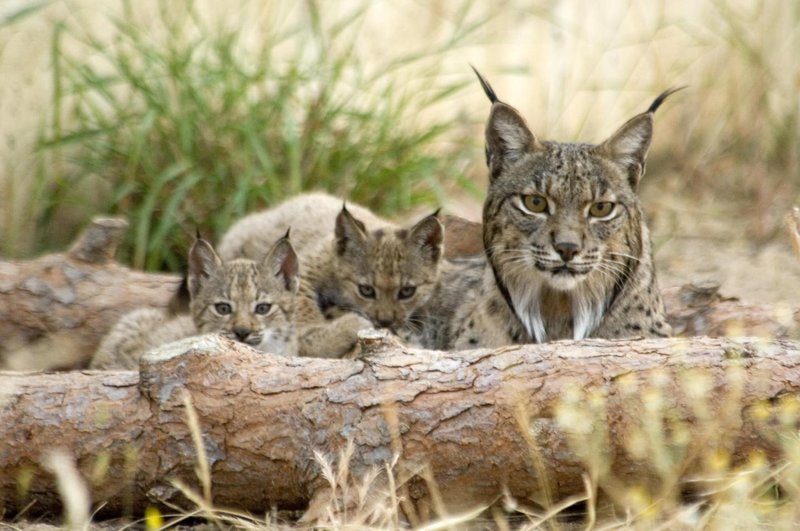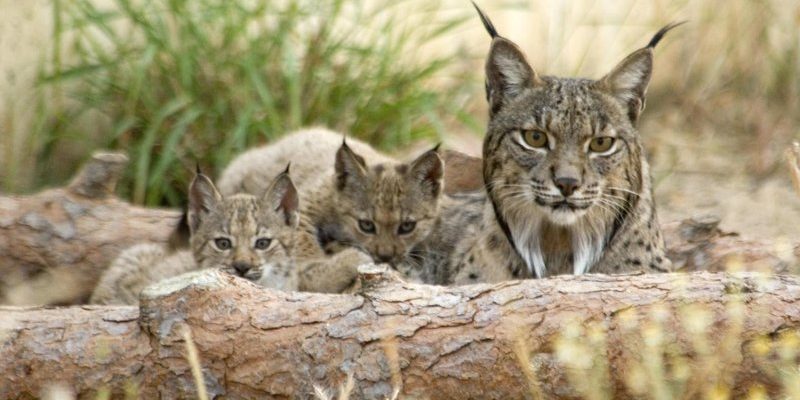
Imagine you’re trying to keep a rare flower alive in your garden, but it’s constantly at risk due to climate change, habitat loss, and pesky weeds. This is somewhat akin to the plight of the Iberian lynx. Once roaming freely across Europe, its population has drastically dwindled, making it one of the most critically endangered cats in the world. In this article, we’ll dig into the factors that contribute to its status, what conservationists are doing to help, and why protecting such species matters for us all.
Understanding the Iberian Lynx
The Iberian lynx (*Lynx pardinus*) is a unique species found primarily in southern Spain and parts of Portugal. It stands out not just for its striking appearance but also for its specialized diet, which mainly consists of the European rabbit. This close relationship with its prey means that the health of the Iberian lynx is closely tied to the rabbit population. Imagine a perfectly balanced ecosystem where everything relies on one another; the Iberian lynx is a key player in this intricate web.
Historically, this lynx roamed large areas, but habitat destruction and a decline in rabbit populations have taken a toll. Humans have encroached on their habitats through urban development, agriculture, and deforestation. So, whenever you hear about the Iberian lynx, remember it’s not just about saving a cute animal; it’s about preserving an entire ecosystem.
Current Status of the Iberian Lynx
So, is the Iberian lynx endangered? Yes, it is! This species was classified as critically endangered by the International Union for Conservation of Nature (IUCN), mainly due to its dwindling numbers. As of the latest reports, fewer than 400 individuals remain in the wild. This alarming statistic puts the Iberian lynx on the brink of extinction, highlighting the urgent need for conservation efforts.
The fact that the Iberian lynx is endangered has sparked various initiatives aimed at reviving its population. Conservation groups have worked relentlessly to create protected areas, manage habitats, and monitor lynx populations. It’s like a high-stakes rescue mission, where every little step counts towards making a difference in this cat’s future.
Reasons Behind its Endangered Status
Understanding why the Iberian lynx is endangered can be a bit complex, but let’s break it down into simpler parts. Here are the main reasons:
- Habitat Loss: As cities expand and farmland grows, the natural habitats of the Iberian lynx have shrunk, leaving them with fewer places to live and hunt.
- Decline in Prey: The decline of the European rabbit, its primary food source, directly affects the lynx’s survival. More rabbits mean healthier lynx populations.
- Road Mortality: With roads cutting through their habitats, these cats are often struck by vehicles, adding to their struggles.
- Genetic Bottlenecks: With such a small population, inbreeding can occur, leading to health issues and reduced genetic diversity.
Here’s the thing: when one factor changes, it creates a domino effect on everything else. The Iberian lynx’s plight showcases how interconnected nature is, and it reminds us that every species plays a role in maintaining balance.
Conservation Efforts in Action
Fortunately, conservationists aren’t sitting idly by. There’s a concerted effort to save the Iberian lynx from the brink. The *Iberian Lynx Recovery Plan* has seen positive outcomes since it was launched in the early 2000s. This plan includes habitat restoration, captive breeding programs, and community engagement initiatives.
Let’s dig into some specific conservation actions that are making a difference:
- Captive Breeding: Some lynxes have been bred in captivity and successfully reintroduced into the wild. It’s akin to giving a second chance to a species that has faced dire circumstances.
- Habitat Restoration: Creating protected areas and restoring natural landscapes are crucial steps. This includes planting native vegetation and restoring rabbit populations, helping create a thriving environment for the lynx.
- Public Awareness Campaigns: Engaging local communities and raising awareness about the importance of preserving the Iberian lynx have helped foster support for conservation projects.
These efforts have led to a slight increase in the Iberian lynx population over the years, giving hope to conservationists and wildlife enthusiasts alike.
The Role of the European Union
The European Union (EU) plays a significant role in the conservation of the Iberian lynx. Many of the recovery programs get funding and support from EU initiatives aimed at biodiversity and habitat conservation. This cooperation between governments, organizations, and local communities highlights the importance of collective action in saving endangered species.
One successful project, known as the *LynxConnect*, focuses on creating wildlife corridors that allow the lynx to roam freely between fragmented habitats. By connecting isolated populations, these corridors help increase genetic diversity and improve the overall health of the species.
Honestly, the EU’s involvement demonstrates how collaborative efforts can lead to tangible results. It’s a reminder that we can all play a part in conservation, no matter where we are in the world.
What You Can Do to Help
You might be wondering what you can do to contribute to the conservation of the Iberian lynx. While not everyone can head to Spain to participate in habitat restoration, there are still plenty of ways to get involved:
- Educate Yourself and Others: Awareness is key. Share what you learn about the Iberian lynx and why protecting it matters.
- Support Conservation Organizations: Many NGOs are dedicated to saving the Iberian lynx. Consider donating to or volunteering with them.
- Promote Sustainable Practices: Whether it’s reducing waste or supporting eco-friendly businesses, every little bit helps protect wildlife habitats.
Even simple actions can create positive ripples in the broader conservation efforts. You never know how much of a difference you can make until you try!
The Bigger Picture: Why Conservation Matters
Saving the Iberian lynx isn’t just about preserving one beautiful species. It’s about maintaining biodiversity and ensuring that ecosystems continue to thrive. Each species plays a role in its habitat, and losing one can lead to significant consequences for others.
Think about it: If the Iberian lynx disappears, it can lead to an overpopulation of rabbits, which might then strip landscapes bare, affecting other wildlife and plants. Conservation isn’t just a noble cause; it’s essential for our planet’s health.
In conclusion, the story of the Iberian lynx is a poignant reminder of the challenges we face in wildlife conservation. This exotic cat may be endangered, but with collective efforts and increased awareness, there’s hope for its future. Whether it’s through supporting initiatives or learning about wildlife, every little effort counts. So, let’s keep the conversation going and take action to protect this remarkable species and its habitat!

